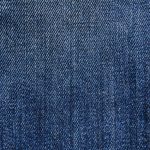When you decide to wax fabrics at home, it's essential to start with the right materials and preparation. You'll want to choose the appropriate wax based on your fabric type, and ensuring your fabric is clean and wrinkle-free is crucial for effective adhesion. Using a warm iron or heat gun can make the application smoother, but the process doesn't end there. The next steps in curing and maintaining your newly waxed fabric can significantly impact its durability and performance, and understanding these can make all the difference in your project.
Table of Contents
Key Takeaways
- Choose the right wax type based on fabric weight and desired finish, opting for softer wax for lightweight fabrics and firmer wax for heavier ones.
- Clean and iron your fabric before waxing to ensure proper adhesion and a smooth application surface.
- Use a low-temperature heat source, like an iron or heat gun, to melt the wax evenly into the fabric fibers.
- Allow the waxed fabric to cure in a cool, dry place for at least 24 hours to ensure durability and water resistance.
Choosing the Right Wax
When choosing the right wax for your fabric, consider factors like the type of fabric and the intended use of the finished project. Different waxes have unique properties that can affect the durability, flexibility, and appearance of your fabric.
For instance, beeswax is a popular choice for its natural qualities and easy application, while paraffin wax offers a firmer finish suitable for more structured projects.
Think about the weight of your fabric too. Lightweight fabrics like cotton may benefit from a softer, more malleable wax, allowing for better drape and movement. Heavier fabrics like canvas or denim might require a more robust wax to provide the necessary water resistance and durability.
You should also consider the finish you're aiming for. Some waxes leave a glossy sheen, while others offer a matte look. If you're working on a functional item, such as a bag or raincoat, you'll want a wax that provides adequate protection against moisture.
Lastly, don't forget about the ease of application. Some waxes require heat, while others can be applied cold, so choose one that fits your comfort level and available tools.
Preparing Your Fabric
Before you start waxing, it's important to prepare your fabric properly to ensure the best results.
First, wash your fabric to remove any dirt, oils, or finishes that could interfere with the wax adhesion. Use a mild detergent and avoid fabric softeners, as they can leave residues that hinder the waxing process. After washing, dry your fabric thoroughly; damp fabric can affect how the wax sets.
Next, iron your fabric to eliminate wrinkles. Smooth surfaces allow for an even application of wax, which is crucial for achieving that desired finish. If your fabric is delicate, use a low heat setting or place a thin cloth over it to protect it from direct heat.
Once your fabric is clean and wrinkle-free, lay it flat on a stable surface. This helps prevent any accidental movement during the waxing process. Ensure you have adequate workspace around you, as you'll need room to maneuver while applying the wax.
Essential Tools and Materials
To get started with waxing your fabrics, you'll need to gather a few essential tools and materials.
You'll want to choose the right type of wax and have the necessary application tools on hand.
Let's break down what you'll need for a successful waxing project.
Recommended Wax Types
Choosing the right type of wax is crucial for achieving the best results when waxing fabrics at home.
You'll often find two popular options: paraffin wax and beeswax. Paraffin wax is affordable and widely available. It melts easily, making it great for beginners. However, it may not provide the durability you need for outdoor projects.
On the other hand, beeswax is a natural alternative that offers excellent water resistance and durability. It's ideal for heavier fabrics and can withstand harsher weather conditions. While it's more expensive than paraffin, its longevity might make it worth the investment, especially for outdoor gear.
You might also consider a blend of both waxes. This combination provides the benefits of each, giving you a balance of affordability and durability. Additionally, specialty fabric waxes are available specifically designed for certain types of textiles, like canvas or cotton, ensuring the best adhesion and performance.
Whichever wax you choose, make sure it's suitable for the fabric type you're working with. This way, you'll achieve the desired outcome and enhance your fabric's functionality and appearance.
Necessary Application Tools
Having the right application tools is just as important as selecting the appropriate wax for your fabric waxing project.
First, you'll need a heat source, like an iron or a heat gun. An iron is often more user-friendly, but a heat gun provides precision for detailed work. Make sure it's set to the correct temperature to avoid damaging your fabric.
Next, gather some wax paper or parchment paper. You'll use this to protect your iron and to help distribute the wax evenly across the fabric. A clean, flat surface is essential, so lay down a cutting mat or a thick towel to work on.
You'll also want brushes or sponges for applying the wax, especially if you're using a liquid wax. These allow for better control and even application.
For clean-up, keep paper towels handy to wipe off any excess wax.
Application Techniques
Begin by evenly spreading the wax over the fabric using a warm iron for a smooth and consistent finish.
Choose a dedicated ironing cloth to protect your iron and ensure even heat distribution. Place the waxed fabric on a flat, heat-resistant surface, and lay the cloth over the area you wish to treat.
Next, press the iron onto the cloth, applying gentle pressure. Move the iron in circular motions to avoid overheating any one spot, which can create uneven patches. Keep the iron moving until you see the wax melt and absorb into the fabric.
It's crucial to use a low to medium heat setting to prevent damaging the material. Once you've waxed an area, lift the cloth to check your progress. If you notice areas that need more wax, repeat the process.
After you've coated the entire fabric, let it cool for a few moments to allow the wax to set.
Remember to keep your workspace well-ventilated, as melted wax can emit fumes. Following these techniques will help you achieve a professional-looking waxed fabric right at home.
Curing and Setting the Wax
Once you've applied the wax, it's crucial to focus on curing and setting it properly.
You'll want to consider ideal curing conditions to ensure the wax adheres well and lasts longer.
Additionally, using recommended setting methods can greatly enhance the fabric's durability and performance.
Proper Wax Application Techniques
To achieve a durable and well-finished waxed fabric, you'll need to master the techniques of curing and setting the wax properly. After applying the wax evenly, it's crucial to ensure it bonds correctly with the fabric. Start by using a heat source, like an iron or heat gun, to melt the wax into the fibers. Make sure you're using a low setting to avoid damaging the fabric.
Once you've melted the wax, let it cool slightly before applying pressure to set it. This step is key; it helps ensure the wax penetrates the fabric for better durability.
Here's a quick reference table to help you remember the key steps:
| Step | Action | Purpose |
|---|---|---|
| Apply Wax | Spread an even layer | Ensures uniform coverage |
| Heat the Wax | Use a low-temperature iron | Melts wax into fabric |
| Cool and Set | Let it sit before handling | Secures the wax for durability |
Ideal Curing Conditions
After setting the wax with heat, you'll want to create ideal curing conditions to ensure the best results for your waxed fabric. Timing is crucial, so let your fabric rest in a cool, dry place for at least 24 hours. This allows the wax to fully cure, enhancing its durability and water resistance.
Temperature also plays a significant role. Aim for a consistent room temperature, ideally between 60°F and 75°F. Avoid areas with extreme temperature fluctuations, as this can affect the wax's performance.
Humidity can be another factor; a dry environment is best, as moisture can interfere with the curing process. If possible, keep the fabric away from direct sunlight during this period. Sunlight can cause the wax to break down prematurely, leading to a less effective finish.
Lastly, make sure the fabric is laid flat, as hanging or folding it too soon can create uneven wax distribution.
Recommended Setting Methods
The best way to set the wax on your fabric is by using heat, which helps ensure even distribution and a durable finish. You can achieve this by using an iron or a heat gun.
If you choose an iron, set it to a medium temperature without steam. Place a piece of parchment paper or a cotton cloth over the waxed area to protect both the fabric and the iron. Press down firmly for about 10 to 15 seconds, then lift the iron to check the wax's shine. Repeat as needed until the wax is fully absorbed.
If you opt for a heat gun, hold it about 6 inches away from the fabric. Move it in a steady motion to evenly distribute the heat, being careful not to concentrate too long in one spot. This method tends to work faster, but you'll need to keep a close eye to prevent overheating.
Once you've set the wax, let the fabric cool completely. This cooling period allows the wax to harden and bond with the fibers, ensuring your project remains water-resistant and durable for use.
Maintenance and Care Tips
Maintaining your waxed fabrics requires regular cleaning and proper storage to keep them looking their best. Start by wiping down your fabrics with a damp cloth to remove dust and dirt. Avoid soaking them in water, as excessive moisture can damage the wax coating. When you need a deeper clean, use a mild soap solution and a soft sponge, rinsing thoroughly with a damp cloth afterward.
For storage, always hang your waxed fabrics in a cool, dry place. If folding is necessary, place a protective layer of fabric between the folds to prevent creasing and cracking of the wax.
Here's a quick reference table for maintenance and care:
| Task | Frequency | Tips |
|---|---|---|
| Wipe down with cloth | Weekly | Use a damp, soft cloth |
| Deep clean | Monthly | Use mild soap and rinse well |
| Check for damage | Monthly | Inspect seams and edges |
| Store properly | As needed | Hang or fold with protection |
Frequently Asked Questions
Can I Use Beeswax Instead of Paraffin Wax?
Yes, you can use beeswax instead of paraffin wax. Beeswax offers natural properties, making it a great alternative. Just remember, it might create a different texture and finish than paraffin, so adjust your expectations accordingly.
How Do I Remove Wax From Fabric Mistakes?
To remove wax from fabric mistakes, you'll want to place a paper towel over the wax, then apply heat with an iron. The wax will melt and absorb into the towel, making cleanup easier.
Is Waxing Safe for All Types of Fabrics?
Waxing isn't safe for all fabrics. Delicate materials like silk or lace can get damaged, while sturdier fabrics like cotton or canvas usually handle it well. Always test a small area first to avoid mishaps.
Can I Add Color to the Wax?
Yes, you can add color to the wax! Just mix in fabric dye or pigments before applying. Make sure the additives are compatible with the wax to ensure vibrant, lasting results on your fabric.
How Long Does the Wax Last on Fabric?
The wax on fabric can last several weeks to months, depending on usage and washing. If you handle the fabric gently and avoid harsh chemicals, it'll maintain its protective qualities longer.
- Tetron Fabric for Marine Applications: Durability and Use Cases - June 18, 2025
- Tetron Fabric for Outdoor Furniture: Weather Resistance and Care - June 18, 2025
- Tetron Fabric for Wall Coverings: Style and Application Tips - June 18, 2025




